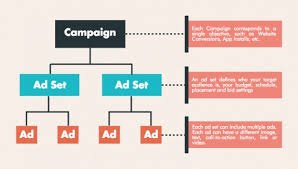Understanding Search Ads vs. Display Ads
In Pay-Per-Click (PPC) advertising, two primary types of ads help businesses achieve different marketing goals: Search Ads and Display Ads. Understanding their key differences helps in choosing the right strategy for your business.
What Are Search Ads?
Search Ads appear on search engine results pages (SERPs) when users type in specific keywords. These ads are text-based and highly targeted.
Benefits of Search Ads
- Intent-driven – Show ads to users actively searching for your services.
- Higher conversion rates – Users are more likely to take action.
- Cost-effective – You pay only when someone clicks.
- Best for service-based businesses.
👉 Need expert Google Search Ads management? Check out our Paid Ads services.

What Are Display Ads?
Display Ads appear across websites, apps, and YouTube videos, showing visually engaging images, banners, or videos to a broader audience.
Benefits of Display Ads
- Great for brand awareness – Reach a larger audience.
- Visually appealing – Use images, animations, and video.
- Ideal for retargeting – Remind users who visited your website.
- Best for eCommerce, SaaS, and product promotions.
🚀 Boost your brand visibility with our Google Ads services.
Key Differences Between Search Ads & Display Ads
| Feature | Search Ads | Display Ads |
|---|---|---|
| Placement | Search Engine Results Pages (SERPs) | Websites, apps, YouTube |
| Ad Type | Text-based | Image, video, or banner |
| Audience | Active searchers | Passive browsers |
| Goal | Lead generation & conversions | Brand awareness & retargeting |
| Best For | Service businesses, high-intent customers | eCommerce, brand building, remarketing |
Which One Should You Choose?
- Use Search Ads if you want to target users with high buying intent.
- Use Display Ads if you want to build brand awareness and retarget visitors.
- Use both for a full-funnel marketing approach!
📢 Need help setting up the perfect PPC campaign? Check out our SEO and PPC services.
Final Thoughts
Both Search Ads and Display Ads are powerful PPC strategies, but they serve different purposes. Choosing the right one depends on your business goals, audience, and budget.
📞 Call us at 0161 399 3517
📧 Email us at Syed_66@hotmail.com
🌐 Visit: Social Media Max

